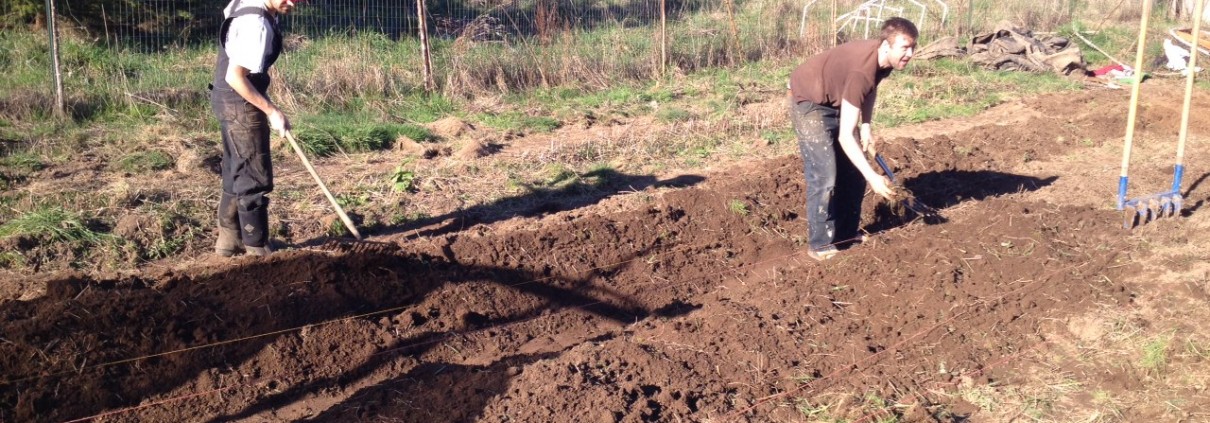Getting Into a Rut, and Breaking Out of It
You know the feeling when life is a little bit less exciting than it should be? When everything feels hard to do, and nothing is paying off? When the clouds are extra dark and you can’t quite remember what the sun looks like (this happens a lot in the Northwest)? Do you feel like you might be in, I almost cringe to write it, a rut? Everything is crashing down! Things are all wrong! They will never be right again!
Whoa. We’re okay. It happens all the time. This is totally normal. It sucks, but it’s okay.
I know how it feels to be in a rut. I’ve been there before, a lot. A rut can be especially devastating if we’re working on our own projects and lack external support or structure. It’s a natural part of the growth cycle, and sometimes we just have to accept that things are going to seem shoddy for a bit. Here’s my strategy for dealing with the dreaded “RUT.”
Recognize
This can be the hardest part of the whole thing. If we aren’t able to recognize that we’re in a rut, or that we’re sad, it is easy to think that the world really has gone wrong. It is easy to blame our feelings on external circumstances and things that are outside of our control, and to let those feelings wallow and dwell inside us.
The first step is saying to ourselves, “I’m in a rut.” Or, “I’m sad.” By owning our feelings, we can better understand what it is that we’re missing or needing at the moment. As long as we blame the outside world, we’ll never be empowered to make the changes we need.
For example, if everything feels like it is going wrong and I blame it on the economy, then I am completely disempowering myself to make things right or better until the economy improves. Here’s there secret: the economy has no bearing on our present-moment happiness, or on how we interact with the day. It can feel like it does, but that is because we are giving away our power to external influencers.
Accept Our Feelings
Once we recognize how we’re feeling, we need to accept that and remind ourselves that it’s okay. We’re allowed to feel feelings! Even if they are tough ones. There is nothing wrong with feeling sad or in a rut. That is part of being human. Once we tell ourselves “I’m in a rut,” the next things we should say is, “and that’s okay.”
Even when we’re not feeling great, it is important to remember that we are not any less loved or valued. It may feel like the world is against us, but it’s not really. A few negative interactions or hard conversations can bring us way down, but if we can remain compassionate toward ourselves and others, all of that is bound to buoy up again. Which brings us to:
Push Through
Every rut ends. Feelings of sadness pass. Everything changes, the good as well as the bad. It might take a day, or a week, or a month, or even a year, but be certain: it will change. In the Vipassana meditation tradition, the word for this is anicca (from Pali, pronounced a-nee-cha). This is also translated as “impermanence.” Everything, literally everything, changes. Even the laws of physics change, if we look back far enough. Our bodies are constantly changing, our moods and emotions. The economy changes, our social values change, technology changes.
When we’re down low, we can be sure that we will be up high again later. When we’re up high, we also know that there will be times when we’re low again. This is how it works. We will be best off if we do not become attached to either of these feelings, the highs or the lows. For the most part, we cycle around a baseline level of happiness, which is independent of external events (but can be increased by changing our world-view and through meditation). When we’re feeling bad, we lose sight of this and feel like things will never get better. They will.
And so we must try to push through. Things will get better with positivity, but it might take a while. Sometimes an external event will snap us out of a rut, but most often we just kind of get over it. It’s important to continue the projects we’ve decided are important to us, to keep exercising, to keep visiting with people at least somewhat regularly. Those are all things that can be hard to keep up, but that will help us out of the rut, if we let them.
And most importantly, we need to remember that being in a rut is not the end of the world. It’s not a sign that everything we’ve been working on is wrong, or that we should stop creating. We need not cut off ties with the world, or do anything drastic at all.
Instead, finding ourselves in a rut is a sign that we should take care of ourselves, take deep breaths, and go for a run.
We’re okay.





